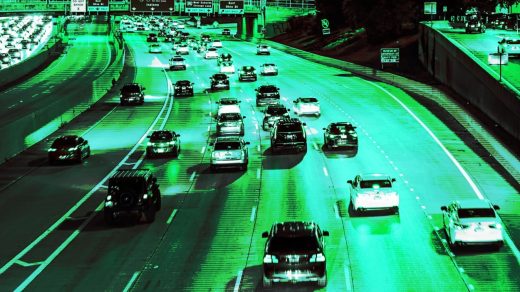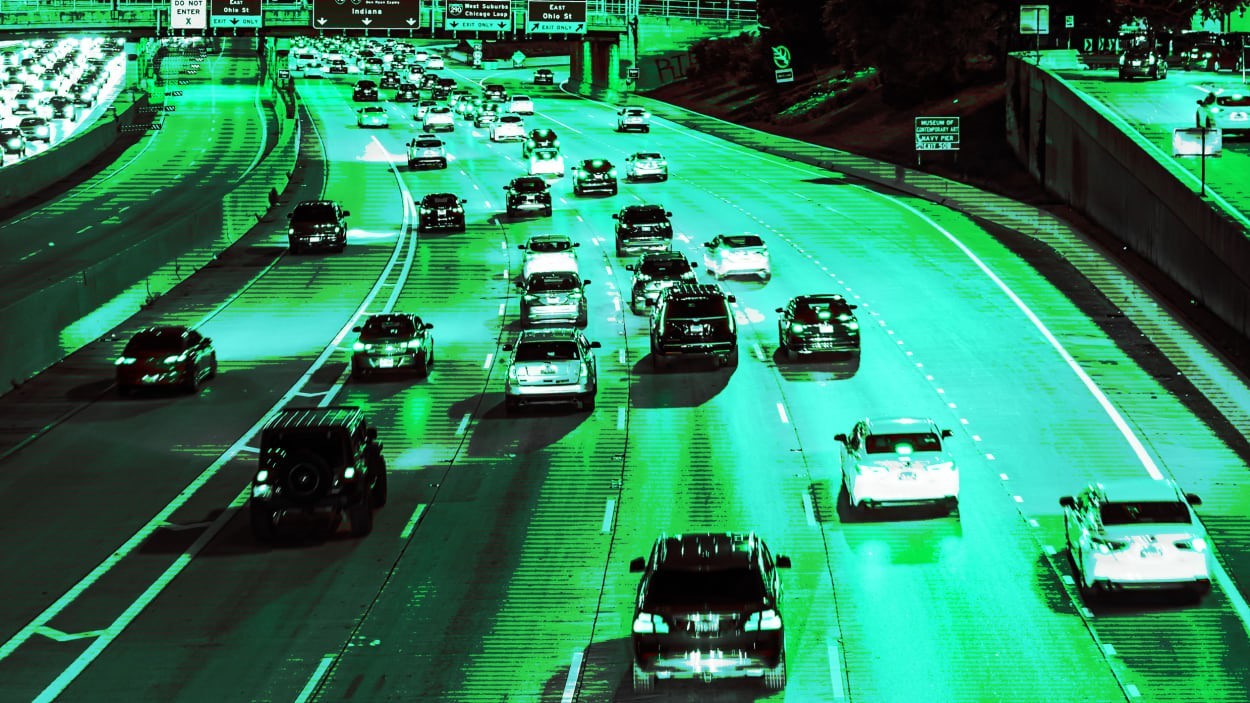Traffic deaths rose 30% in the past 10 years. Here’s what it will take to get to zero
Your drive into the office likely takes longer than ever. Your holiday travel plans may have been delayed, then delayed again. And you’ve probably noticed how common it is for the driver next to you to be distracted by the blue glow of their phone.
Whether you’re stuck in rush hour traffic, behind an erratic and dangerous driver, or witnessing a crash on the side of the road, it’s easy to feel like our transportation system is moving in the wrong direction—that driving is getting worse instead of getting better.
Unfortunately, you’re not wrong.
Despite technological advancements, driving has grown more time-consuming, more frustrating, and more dangerous. Crashes are increasingly costly and severe. Drivers are more distracted, more reckless, and more aggressive. Major U.S. cities are full of congestion, even with fewer people consistently going into the office. And smaller cities and towns are experiencing new transportation difficulties as people move away from big cities en masse.
Worst of all, more people are dying on our roads. In fact, traffic deaths have risen by a shocking 30% over the past decade.
Our transportation system is broken, and it’s incurring a significant human cost. But it doesn’t have to be this way.
As we look to the new year, there’s no better time to reimagine a better future of mobility—a future of transportation that’s safer, smarter, and more useful for all of us. What’s stopping us from realizing that?
What it will take to reach zero traffic deaths
I want to live in a world with zero road fatalities. Where lives aren’t at risk as you travel from point A to point B. Where no one has to lose a friend, parent, or child in an avoidable accident. We believe the future of mobility is a world with zero road fatalities.
To get there will require a better understanding of how people move, behave, and interact on and off the road—and it will require all of us to work together toward this common goal. Here are three crucial steps in our journey ahead.
Understanding and solving problems
People are generating massive amounts of data as they drive, use their phones, and move throughout their day. Yet despite access to more data, there’s a shocking lack of insight being used to improve driving through accident-prone areas, avoid dangerous driving behavior, and help evolve traffic patterns—and it’s hindering progress in getting us to a better future for mobility.
By connecting data points across the transportation ecosystem, we can turn raw information into deeper, more meaningful insights to help us better understand and solve pressing problems. With insights into how people drive, auto insurers can incentivize safe driving behaviors, car manufacturers can build safer models, and city planners can design safer roads.
For instance, recent Arity data shows that more people tend to speed home following Thanksgiving and Christmas days. They may also avoid traveling when roads are experiencing peak traffic and heightened crash levels or remain extra cautious if they need to drive during these times.
With real-time access to driving behavior data, drivers can choose faster routes and make safer decisions on the road, city planners can better manage traffic congestion and mitigate dangerous scenarios, and all of us can get to where we’re going with fewer risks and delays.
Innovating solutions that make driving smarter and safer
New and emerging technology innovations are fueling the largest revolution in transportation since the Ford Motor Company’s assembly line. These innovations are making transportation smarter and more sophisticated. More importantly, they’re making it safer.
We need continued innovation and investment in solutions—technological and otherwise—that will save lives on the roads. In the future, tech companies, governments, and other transportation stakeholders will need digital solutions that foster greater collaboration, enhance problem-solving, and improve not just their bottom line, but experiences on and off the road for everyone. We’re working with all of these partners to bring new, innovative solutions to life.
Working together
If we’re going to make our transportation system safer, it will take a collective effort among everyone who relies on and works in transportation. Drivers, vehicle manufacturers, tech companies, governments, advocacy groups, city planners, and even marketers and auto insurers—all of us need to completely reexamine our approach to pedestrian, cyclist, and driver safety.
Historically, this broad array of transportation stakeholders has worked in silos, without shared knowledge or a common vision. Often, the motivations and incentives that fuel their work diverge.
But we can no longer tolerate our declining transportation infrastructure. It’s time for all of us to work together for the greater good. That means greater sharing of transportation data, improved collaboration and communication, and a scaled approach to fix the problems making driving and traffic safety worse for all of us.
One of the biggest problems is distracted driving, an epidemic of on-the-road technology usage that’s costing the U.S. nearly $100 billion and causing 10,000 fatalities and more than one million nonfatal injuries each year. Unfortunately, we’ve seen distracted driving increase by more than 30% in the past four years. But we’re also gaining better insights into when people are driving distracted and what’s causing them to do so. In fact, Arity has found that distracted driving takes place more often during colder seasons when adverse weather is more likely, and on weekdays when people tend to commute to work.
With these insights, everyone can play a part in building the future of transportation: Departments of Transportation (DOTs) can pinpoint the riskiest areas for distracted driving and proactively add traffic safety measures in those areas, auto insurers can incentivize risky drivers to make safer decisions behind the wheel by rewarding customers with reduced policy deductibles, and drivers can make the changes necessary to put down their phones and pay attention to the road. We all have a role to play.
Building a better future for mobility
I believe that we can and should build a better, safer future for mobility. To be clear, I’m not talking about some far-off Jetson’s future with flying cars; I’m talking about the ways access to data is helping us solve problems and create new possibilities today—and the role each of us can play right now.
No matter where you stand in our transportation network, you can drive progress through information and insights into the evolving ways people move, the technology they use, and their experiences on and off the road. By using the vast amount of data available to us, we can better understand the shape and nature of problems, identify effective solutions, and build on progress over time.
(11)



